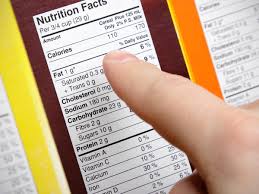How to Read a Nutrition Information Label

How to Read a Nutrition Information Label

The Nutrition Facts label can provide you with lots of useful information, but what does it mean and how can it help you to make better food choices? We spoke to our experts who told us what you should know.
Step 1: Portion Size vs. Serving Suggestion
What’s the difference between a serving and a portion? A serving of food is the official amount that’s listed on the label, while a portion is the amount that you actually eat. While your portion may not always be the same size as the official serving, all the nutrition information that’s listed on the Nutrition Information panel does refer back to these serving sizes.
The current official serving size of a beverage is 250 millilitres, but many drinks come in much larger cans and bottles that may contain two or more servings. If you were to drink a 500-millilitre bottle of sweetened tea, you’d be drinking two servings, instead of one. This means that you would need to double all the information on the nutrition information panel (kcal and sugar) to work out how much you’ve taken in.
Similarly, for labelling purposes, a serving of potato crisps is 30 grams, which is about 15 individual crisps. However, if you’re eating from a large bag, you’re probably eating several servings without you even realising it. If you want to work out how many kcals you’ve consumed, you will need to count or weigh your crisps before eating them.
Tip from our Experts:
Try to weigh and measure your foods with a scale and use measuring cups until you get good at “eyeballing” your own portions. If you’re keeping track of your calories, it won’t do you much good if you don’t know how much you’re really eating.
Step 2: Nutrients, Saturated Fats and Fibre
Labelling for protein, fat and carbohydrate content is provided on a per-serving basis. The same goes for sugar, fibre and salt. As with the example above, you also need to know how many servings you’re consuming, so that you can estimate your intake of these nutrients accurately.
It’s important to remember that the total carbohydrate listed includes all forms of carbohydrate such as sugar and starch. Below that number you may find separate listings for fibre and sugar. The listing for sugar includes added sugars as well as naturally occurring sugars (such as natural sugar in milk or fruit). With all of this in mind, it’s not always easy to know where the sugar is coming from without looking at the actual ingredients list.
Step 3: % Reference Intake
Another piece of information that you may see on the label is a column with “% Reference Intake.” Reference Intake are standard recommended levels of intake for various nutrients that are established by the European Commission for use on food labels. The information in this column tells you what percentage of the recommended intake for each nutrient is found in a serving of food.
1Ref: EC, Official Journal of the European Union, 2011, L304/18
